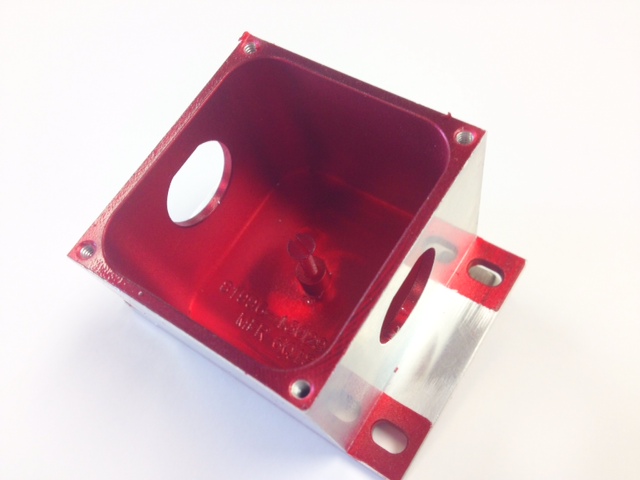Anodizing a metal part protects prototypes from wear and corrosion. Selective anodizing comes into play when the anodizing process can’t be tolerated on a certain component, such as mating components or threads.
What is anodizing?
The anodizing process adds a coating of aluminum oxide. This grows from the aluminum with the use of an electric current, which passes through an acid electrolyte bath. The thickness of the coating can be controlled to meet specifications dictated by the end product. The result is an extremely hard layer of metal that protects the part.
Why so selective?
As you’ve figured out by now, adding a metal coating to an area where threads or mating pieces need to fit together will ruin the part. This also adds a layer of difficulty for the manufacturer creating the piece, since they must make sure the aluminum oxide coating doesn’t get into areas where it’s not welcome. It takes keen attention to detail and a clear understanding of the customer’s end-product to get it right.
Masking
Manufacturers employ a number of simple masking techniques to keep coating in the right place. Plastic and rubber come to mind first. Considering the anodizing process takes place with an electric current, those materials will obviously not conduct current. Pieces such as plastic screws are used to protect threads, while custom-fit rubber is used to cover larger areas. These “masking” pieces can be used more than once as long as the parts remain consistent in the production phase.
Beyond plastic and rubber, selective anodizing experts also use special tape, lacquers and wax to protect parts from the anodizing process. Selective anodizing can add time and cost to a project. However, there are many ways to produce larger components, to anodize them and add details to the part later.
As always, Product Development Solutions will work with you to produce the quality you need in the most efficient manner possible. Bring your project to us for a fast quote, and let us show you the best path to production.

